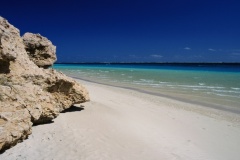
The striking Ningaloo Coast is comprised
of both marine and land-based treasures.
of both marine and land-based treasures.
Courtesy of Sergio Pitamitz/Super Stock
UNESCO has just unveiled the newest members of their World Heritage List, which celebrates notable natural and cultural sites around the globe. To be considered for inclusion, a place has to meet at least one of ten criteria, which range from "representing a masterpiece of human creative genius" to being an area of "exceptional natural beauty and aesthetic importance." The Class of 2011 includes prime examples of all, including the world's top flamingo foraging site, elaborate Persian gardens, and the legendary stomping ground of Lawrence of Arabia. Here are 10 sites that made the cut.
Ningaloo Coast (Australia)
Made up of nearly 2,335 square miles of Australia's remote western coast, the striking Ningaloo Coast is comprised of both marine and land-based treasures. In the water off the Ningaloo Coast, you'll find one of the longest near-shore reefs in the world and a wealth of diverse sea life, from sea turtles to an annual visit from whale sharks. On the land side, a network of underground caves and groundwater streams help support the coast's biodiversity.
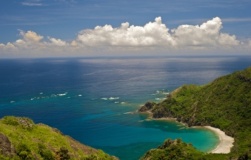
South of Tokyo, this archipelago of over 30 islands is often called the "Galapagos of the Orient."
Courtesy of IlovePhotoandApple/Getty
Ogasawara Islands (Japan)
South of Tokyo, this archipelago of over 30 islands is often called the "Galapagos of the Orient" because of its diverse ecosystems, landscapes and native species. Since the islands have never been near a continent, the native flora and fauna have developed through unique evolutionary processes. Along with over 440 documented native plant taxa, the Ogasawara Islands are home to close to 200 endangered bird species, numerous types of fish and coral, and the Bonin Flying Fox, a bat that's in danger of extinction. Only two of the islands are inhabited, with about 2,440 residents in total.
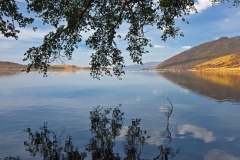
The area around three interconnected shallow lakes—Lake Bogoria, Lake Nakuru, and Lake Elementaita—is home to a stunning arena of bird and mammal life.
Courtesy of Nigel Pavitt/JWL/Aurora Photos
Kenya Lake System in the Great Rift Valley (Kenya)
Set in Kenya's Great Rift Valley region, the area around three inter-connected shallow lakes—Lake Bogoria, Lake Nakuru and Lake Elementaita—is home to a stunning arena of bird and mammal life. Great Rift Valley is considered the most important foraging site in the world for the lesser flamingo (the smallest species of flamingo at 3 feet tall)—countless of which can be spotted there—and it's also a top nesting and breeding ground for great white pelicans. Black rhino, lions, Rothschild's giraffe, greater kudu and cheetahs quench their thirst at the lakes.

The majestic Wadi Rum—the largest desert valley in Jordan—was the famous stomping ground of the real-life Lawrence of Arabia.
Courtesy of Michael Runkel/SuperStock
Wadi Rum Protected Area (Jordan)
The majestic Wadi Rum—the largest desert valley in Jordan—was the famous stomping ground of the real-life Lawrence of Arabia. The Wadi Rum covers 286 square miles in the southern part of the country and is notable both for its natural and cultural wonders. In addition to photo-perfect desert landscapes marked by caverns, narrow gorges and massive cliffs, there is evidence of 12,000 years of human habitation here. Petroglyphs, archaeological remains, 20,000 inscriptions and 25,000 rock carvings offer insight into the lives the early residents of Wadi Rum.
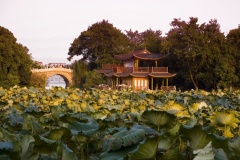
Peaceful and picturesque, the area is dotted with causeways and artificial islands.
Courtesy of St. Augustine Pirate & Treasure Museum
West Lake Cultural Landscape of Hangzhou (China)
It's easy to see why this lake, surrounded by hills on three sides, has been inspiring poets, artists and scholars since the 9th century. Peaceful and picturesque, the area is dotted with causeways and artificial islands, as well as man-made beauties like temples, pavilions and pagodas. Over the years, the West Lake cultural landscape has influenced garden design in China, Japan, and Korea.

The nine gardens date back to different periods since the 6th century B.C.
Courtesy of Alireza syz/Wikimedia
The Persian Garden (Iran)
It may not be the Hanging Gardens of Babylon, but its influence has been no less notable. Comprised of nine gardens that date back to different periods since the 6th century BC, its sites are prime examples of the diversity of Persian garden designs, which traditionally paid homage to Eden and the four Zoroastrian elements (earth, water, sky, plants). Dotted with historic pavilions and walls, as well as sophisticated irrigation systems, the gardens have inspired garden design as far away as India and Spain.
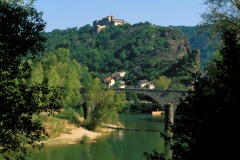
The Causses and the Cévennes regions are notable examples of the working relationship between man and nature.
Courtesy of Picture Contact BV/Alamy
The Causses and the Cévennes, Mediterranean Agro-Pastoral Cultural Landscape (France)
Together making up over 1160 square miles of south-central France, the Causses and the Cévennes regions are notable examples of the working relationship between man and nature—places where agricultural activities, like non-intensive sheep farming, help contribute to the preservation of the land. Within the site you'll find the beautiful Cévennes National Park, as well as villages and stone farmhouses on the terraces of the Causses. Mont Lozère, the highest point in Cévennes, is one of the last places in the world where they practice summer transhumance, during which shepherds move along with their stock to higher pastures for the whole season.
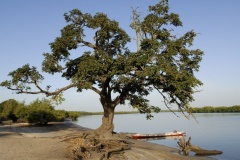
This 1,930-square-mile delta gives us key insight into both natural and human history.
Courtesy of Hemis.fr/SuperStock
Saloum Delta (Senegal)
This 1,930 square mile delta shaped by the arms of three rivers gives us key insight into both natural and human history. Over 200 islets and islands dot the Saloum Delta, along with dry and mangrove forests and marine habitats for the rich fish and shellfish life. The area is also home to 218 human-made shellfish mounds, some several hundred meters long. Burial sites on 28 of the mounds have yielded important artifacts that speak of the history of human residence along this part of the West African coast.
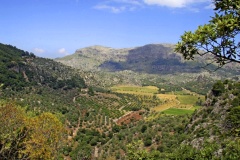
Farmers throughout history came up with ingenious ways to work the land.
Cultural Landscape of the Serra de Tramuntana (Spain)
This landscape is located on the majestic mountain range that lies off of the northwestern coast of the Spanish island of Majorca. Because of the area's sheer-sided peaks and scant resources, farmers throughout history have had to come up with ingenious ways to work the land. Now, after thousands of years of agriculture, the area has unique water management and transport networks, agricultural terraces, connected water mills and dry stone structures in its villages—making it both naturally and culturally notable.
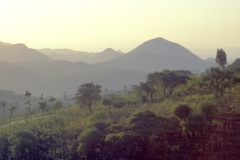
Within Ethiopia's Konso highlands you'll find original living traditions that date back more than 400 years.
Konso Cultural Landscape (Ethiopia)
Within the stone walled terraces and fortified settlements of Ethiopia's Konso highlands you'll find original living traditions that date back to more than 400 years. Over 21 generations, inhabitants have adapted to the dry, hostile environment by creating special social systems, engineering techniques and craft works—including wooden statues grouped to represent noteworthy residents and heroic events. The statues are amazing standing remnants of funerary traditions that are in danger of disappearing.

No comments:
Post a Comment